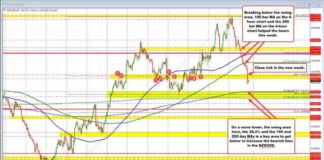The Labor Market Softens as Job Openings Decline in July
In a recent report released by the Labor Department, it was revealed that job openings took a significant hit in July, dropping to their lowest level in 3½ years. This decline in available positions, down to 7.67 million, marks a concerning trend in the labor market and indicates a softening in overall job availability. The data also showed a decrease of 237,000 job openings from June’s numbers, painting a grim picture for job seekers across various industries.
Economists had been anticipating a more positive outlook, with a projected 8.1 million job openings for July. However, the actual figures fell short of these expectations, leading to a ratio of job openings per available worker of less than 1.1. This ratio is a key indicator of the health of the labor market, and the sharp decline from its peak of more than 2 to 1 in early 2022 is cause for concern.
Implications for the Federal Reserve and Interest Rates
The latest data on job openings provides further insight for Federal Reserve officials who are expected to convene for their next policy meeting in September. The decline in job openings, coupled with an increase in layoffs to 1.76 million, may prompt the Fed to consider lowering interest rates to stimulate economic growth. The Fed closely monitors reports like the Job Openings and Labor Turnover Survey as indicators of labor market strength, and the recent numbers suggest a cooling trend that could warrant intervention.
Nick Bunker, head of economic research at the Indeed Hiring Lab, noted that the labor market has not only cooled down to its pre-pandemic levels but has actually dropped below them. This development raises concerns about the overall health of the economy and the potential impact on job seekers and workers. Policymakers at the Federal Reserve are keenly aware of the implications of a weakening labor market and will need to take decisive action to address the situation.
Analysis of Industry Trends and Sectoral Changes
The report also highlighted specific trends in various industries, shedding light on the sectors most affected by the decline in job openings. The professional and business services sector saw the largest increase in openings, with 178,000 positions available. On the flip side, private education and health services experienced a significant drop of 196,000 job openings, while trade, transportation, and utilities declined by 157,000. Government, which has been a key source of job gains in recent years, also saw a decrease of 92,000 openings.
Overall, the data suggests that while the economy may be slowing, there is no immediate cause for alarm. Krishna Guha, head of the Global Policy and Central Bank Strategy Team at Evercore ISI, noted that the labor market is not cracking, despite the softening in demand for workers relative to supply. The increase in hires, up 273,000 in July, indicates some resilience in the labor market, though challenges remain in matching available positions with qualified candidates.
Looking Ahead: Nonfarm Payrolls and Unemployment Rate
The report comes just before the release of the August nonfarm payrolls count by the Labor Department, scheduled for Friday. Economists are anticipating an increase of 161,000 jobs and a slight decrease in the unemployment rate to 4.2%. This data will provide further insights into the state of the labor market and the overall economic landscape, helping policymakers and analysts gauge the impact of recent trends on job creation and workforce participation.
As the labor market continues to evolve in response to changing economic conditions, it is essential for stakeholders to remain vigilant and proactive in addressing emerging challenges. The decline in job openings in July serves as a reminder of the fragility of the labor market and the need for targeted interventions to support job growth and economic stability. By closely monitoring key indicators and trends, policymakers can make informed decisions that will benefit workers, businesses, and the economy as a whole.

















